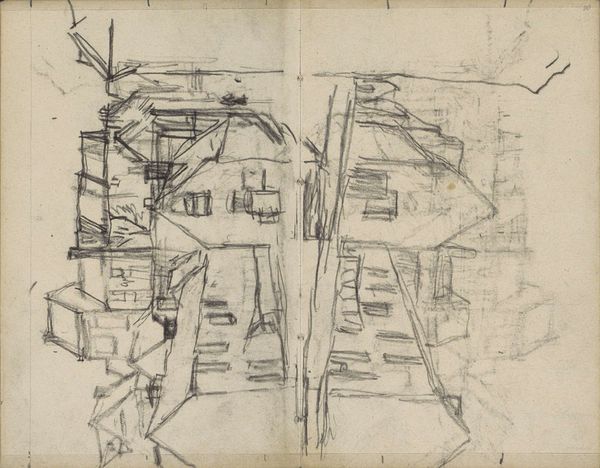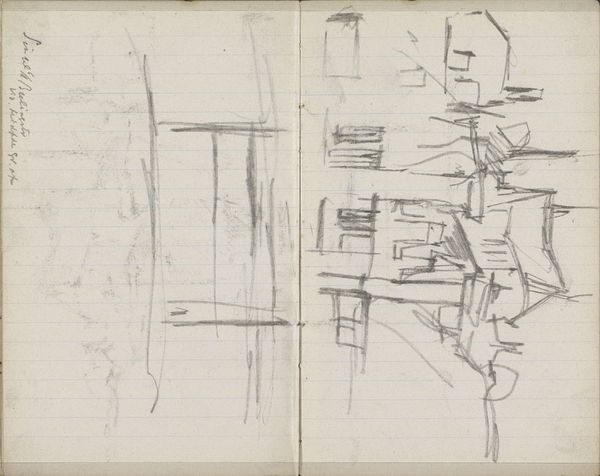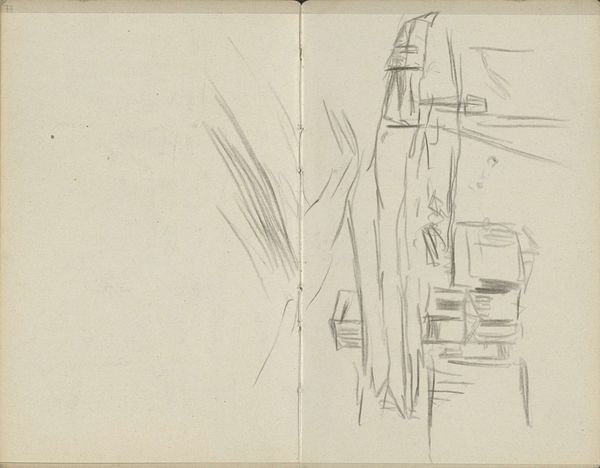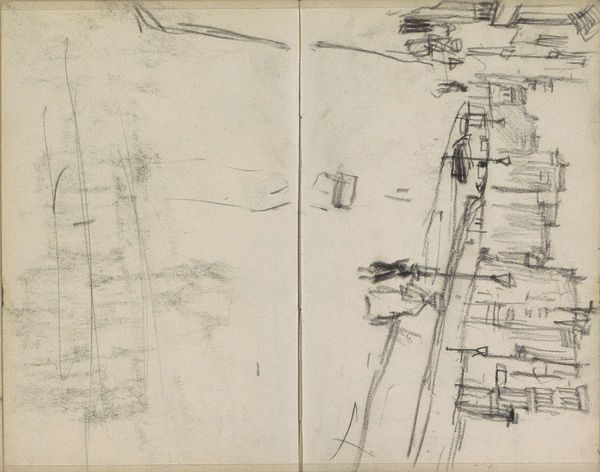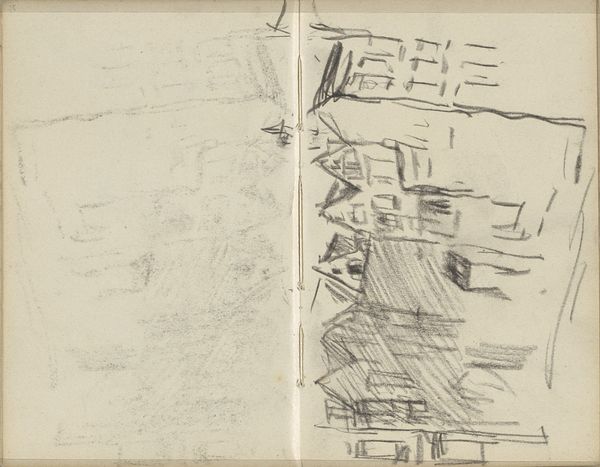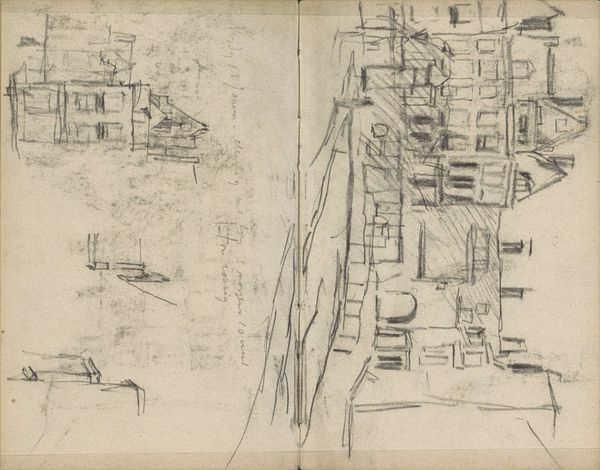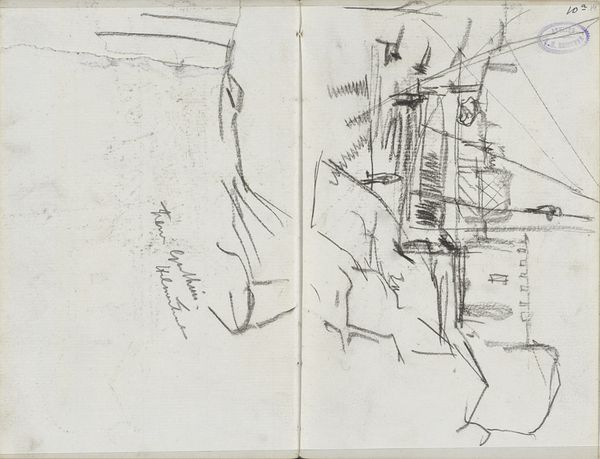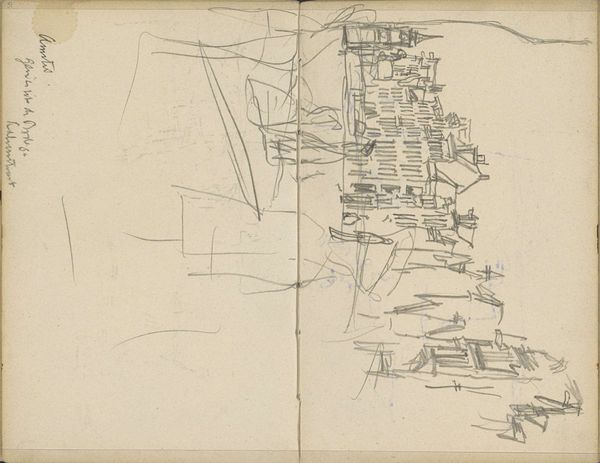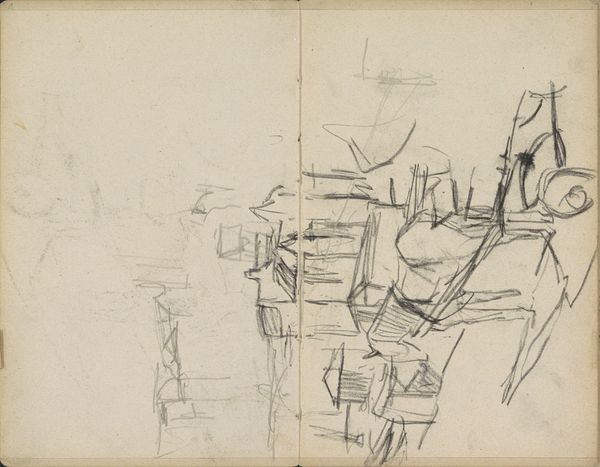
Copyright: Rijks Museum: Open Domain
Curator: Here we have George Hendrik Breitner's "View of the Damrak in Amsterdam," an ink drawing created sometime between 1912 and 1919. Editor: It strikes me immediately as something very raw, very immediate. There’s a skeletal quality to the linework – a sense of things just barely held in place. Curator: Indeed. Breitner was very interested in capturing the fleeting, the ephemeral. You can see that in the loose, almost gestural quality of the lines. Note the structural framework. It's all about the essence of form and perspective. Editor: But even within those quick strokes, I see an older, almost mythical Amsterdam peeking through. That single spire, almost swallowed by the blank space on the right page—it echoes the city’s long maritime history, and that slightly unnerving quiet it might hold when everyone has left for the evening. Curator: The use of negative space here is very deliberate. The contrast between the heavily worked left page, with it's concentration of dense markings, and the comparatively blank right page pushes the structure even further toward the fore. We find that by exploring emptiness, space also takes on a tangible form. Editor: Absolutely. The emptiness highlights a longing, a searching feeling, but what for? Perhaps Breitner, consciously or not, was pointing to what’s been lost over time? Curator: Perhaps, or maybe he’s trying to isolate the core visual experience: pure form. The subject—Amsterdam—is merely a vehicle for his study of lines and space, for creating and conveying a sensation through visual means. Editor: Ultimately, the beauty for me lies in that ambiguity. It allows viewers to connect with their own interpretations and remember shared stories embedded in Amsterdam. Curator: Yes, the artwork does invite a degree of interpretive openness even as it maintains a formalist logic. Editor: So while Breitner offers only these stark lines, viewers have to engage to conjure that rich image in their own mind. It truly bridges the subjective with objective in a captivating dance of historical vision.
Comments
No comments
Be the first to comment and join the conversation on the ultimate creative platform.

